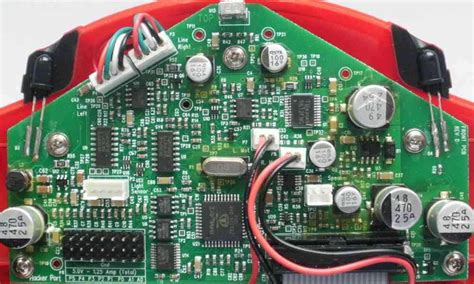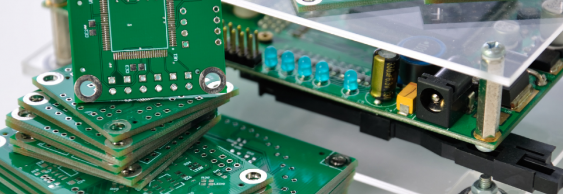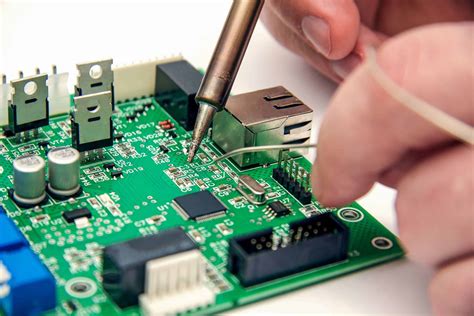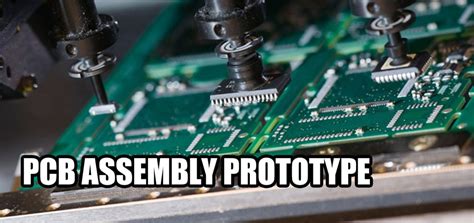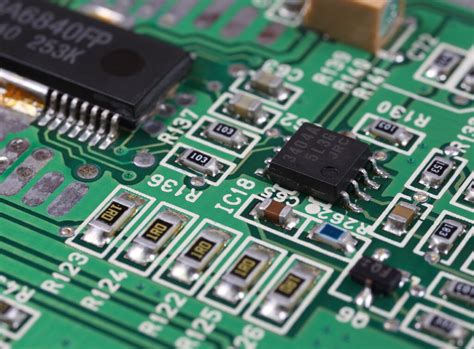Understanding EMS PCB Assembly for Efficient Electronics Production

Key Takeaways
In the realm of electronics manufacturing, EMS PCB assembly stands out as a pivotal process that enhances production efficiency and product quality. By leveraging a streamlined approach to pcb assembly, manufacturers can achieve significant improvements in their operations. Central to EMS (Electronic Manufacturing Services) is the focus on comprehensive solutions that encompass design, fabrication, and assembly, ensuring a smooth workflow from start to finish. The integration of advanced technologies and methodologies in the pcba (Printed Circuit Board Assembly) process not only accelerates production timelines but also supports rigorous quality control measures, leading to fewer defects and increased reliability of end products. Furthermore, implementing best practices such as precise supply chain management and automated testing can enhance efficiency while curbing potential delays. Ultimately, understanding the nuances of EMS PCB assembly allows companies to capitalize on its many benefits, paving the way for reduced time-to-market and improved cost efficiency in their electronic production endeavors.

Introduction to EMS PCB Assembly
Electronics Manufacturing Services (EMS) play a vital role in the world of PCB assembly. This specialized area focuses on providing comprehensive solutions for the design, manufacturing, assembly, and testing of printed circuit boards (PCBs). The process of EMS PCB assembly is essential for delivering high-quality electronic products efficiently and cost-effectively. By leveraging advanced technologies and streamlined workflows, EMS providers ensure that PCBA meets the rigorous demands of modern electronics.
At its core, EMS PCB assembly encompasses a series of meticulous steps that transform raw materials into functional electronic devices. These steps include component procurement, surface mount technology (SMT), through-hole assembly, and rigorous quality assurance testing. Each stage plays a crucial role in achieving optimal performance and reliability.
For manufacturers looking to enhance productivity and reduce operational costs, incorporating EMS PCB assembly can lead to significant advantages. By outsourcing PCBA processes to specialized providers, companies can focus on their core competencies while benefiting from the expertise and resources of experienced service partners.
The following table summarizes key components of EMS PCB assembly:
| Key Component | Description |
|---|---|
| Component Procurement | Sourcing high-quality electronic components |
| Surface Mount Technology (SMT) | Automated placement of components on PCBs |
| Through-Hole Assembly | Inserting leads through drilled holes in PCBs |
| Quality Assurance Testing | Verifying performance and functionality |
In conclusion, understanding EMS PCB assembly is crucial for any organization involved in electronics production. The efficiency gained from adopting these practices not only enhances product quality but also streamlines overall project timelines, making them beneficial for businesses eager to maintain competitiveness in the fast-paced tech industry.
Key Processes in EMS PCB Assembly
EMS PCB assembly, often referred to as PCBA, encompasses several critical processes that are essential for the development and production of electronic devices. At the core of EMS (Electronic Manufacturing Services) is the meticulous design and integration of electronic components onto a printed circuit board (PCB). The process begins with a thorough design review, where engineers evaluate the specifications and layout of the PCB to ensure optimal performance and manufacturability. Once the design meets all criteria, components are sourced, often utilizing a combination of automated inventory systems and supplier partnerships to ensure quality and efficiency.
Following the sourcing phase, PCB assembly utilizes advanced techniques such as surface mount technology (SMT) and through-hole technology, which enable precise placement of components on the board. These methodologies significantly enhance production speed while maintaining high standards for accuracy. The next step involves soldering, which can be accomplished through reflow ovens or wave soldering machines, ensuring that each component is securely attached without damaging sensitive parts.
Once soldered, functionality tests are performed to identify any defects early in the process. These tests often include visual inspections, automated optical inspection (AOI), and functional testing to confirm that each unit meets operational specifications. It is crucial during these stages of PCB assembly to identify any potential issues that could impact product quality or performance in later stages.
Finally, as part of the EMS process, effective packaging methods are utilized to prepare the finished product for shipment while ensuring it remains safe during transport. Each stage within this comprehensive workflow is designed not only to enhance quality but also to minimize waste and reduce overall production costs, aligning with best practices in modern manufacturing. By understanding these key processes in EMS PCB assembly, businesses can optimize their electronics production workflows significantly.
Benefits of EMS PCB Assembly for Electronics Production
EMS (Electronic Manufacturing Services) PCB assembly offers a range of benefits that significantly enhance the efficiency and effectiveness of electronics production. One of the primary advantages is the ability to streamline production processes. By integrating design, manufacturing, and testing under one roof, companies can reduce lead times and minimize communication gaps, fostering a more agile workflow. Furthermore, EMS providers typically utilize advanced technologies in their PCBA processes, which helps improve precision and consistency in product quality.
In addition to operational efficiencies, partnering with EMS can lead to substantial cost savings. Outsourcing PCB assembly allows companies to take advantage of economies of scale that might not be achievable in-house. With lower labor and material costs, businesses can maintain competitive pricing for their products while ensuring higher margins.
Moreover, EMS providers often come equipped with extensive experience and expertise in regulatory standards and compliance requirements for varying industries. This advantage not only reduces risks associated with production but also enhances the reliability of products reaching the market.
"Investing in EMS PCB assembly is not just about saving costs; it’s about elevating quality while driving innovation."
By leveraging these benefits, manufacturers can focus more on core competencies such as design and innovation, ultimately leading to enhanced market responsiveness and technological advancements. Thus, selecting an appropriate EMS partner is crucial to optimizing these benefits for better overall performance in electronics production.
Best Practices for Optimizing EMS PCB Assembly Efficiency
To achieve optimal results in EMS PCB assembly, several best practices should be integrated into the production process. First and foremost, a thorough design for manufacturability (DFM) is essential. This involves optimizing the PCB design to facilitate easier assembly, which can significantly reduce production time and costs. Ensuring clear communication among design teams, engineers, and assembly operators is crucial. Regular meetings and updates can help address potential challenges early in the process.
Furthermore, selecting high-quality components is vital for minimizing defects. Skilled personnel should be involved in supplier selection to ensure materials meet rigorous standards. Utilizing advanced PCB assembly techniques, such as surface-mount technology (SMT) or through-hole technology (THT), can enhance speed and precision.
Implementing automation where feasible can also optimize efficiency in PCBA manufacturing. Robotics and automated inspection systems reduce human error while increasing the speed of assembly. Additionally, regular training programs for employees ensure that they are up to date on the latest technologies and practices, ultimately contributing to smoother operations.
Lastly, embracing lean manufacturing principles can help in streamlining processes by eliminating waste and focusing on value-added activities only. By adhering to these best practices, companies can optimize their EMS PCB assembly operations effectively, leading to increased productivity and reduced costs in the long run.
Cost Reduction Strategies in EMS PCB Assembly
Cost management is a critical factor in the EMS PCB assembly process, as it directly impacts the overall profitability and efficiency of electronics production. Implementing effective cost reduction strategies can lead to significant savings while maintaining quality standards. One of the most effective methods is to streamline the PCB assembly workflow by utilizing automated processes. Automation not only enhances speed but also minimizes human error, which can lead to costly reworks.
Additionally, sourcing materials from reliable suppliers at competitive rates is essential. Establishing strong relationships with vendors can reduce material costs for PCBA, thus contributing to overall savings. It is also beneficial to conduct a thorough analysis of manufacturing processes to identify bottlenecks or inefficiencies that may drive up costs. By optimizing these processes, companies can improve production timelines and reduce waste.
Incorporating modular design principles into PCB assembly can further enhance flexibility and reduce expenses by simplifying upgrades and repairs. Moreover, conducting regular training for staff ensures that teams are well-versed in the latest techniques and technologies, which increases operational efficiency and leads to a decrease in production costs. Ultimately, these strategies empower organizations to leverage EMS PCB assembly not only as a manufacturing process but also as a means of achieving substantial cost efficiencies in their projects.

Case Studies: Successful Applications of EMS PCB Assembly
The effectiveness of EMS PCB assembly can be best understood through various case studies that showcase its transformative impact on electronics production. One notable example is a leading telecommunications company that adopted pcba services to enhance its product line efficiency. By utilizing EMS, they significantly reduced the time-to-market for new devices, allowing faster deployment of their latest innovations. Their strategy involved integrating advanced soldering techniques and streamlined testing processes within the pcb assembly phase, which contributed directly to minimizing defects and enhancing product reliability.
Another compelling case is that of an automotive electronics manufacturer, which faced challenges in scaling production while maintaining quality standards. By partnering with an experienced EMS provider, they implemented a robust pcba workflow that ensured every component was inspected thoroughly pre-assembly. This meticulous approach to pcb assembly resulted in a 30% drop in rework costs and improved overall production efficiency. Through these real-world applications, it becomes evident that the adoption of EMS PCB assembly not only streamlines production processes but also fosters innovation and enhances product quality across multiple sectors within the electronics industry.
Future Trends in EMS PCB Assembly Technology
As the electronics industry continues to evolve, EMS PCB assembly is set to experience significant advancements that will enhance both production capabilities and efficiency. One of the most notable trends is the integration of automation and robotics in pcb assembly processes. This shift aims to reduce labor costs and increase precision, enabling manufacturers to produce complex designs swiftly while minimizing errors. Additionally, the incorporation of advanced materials, such as flexible substrates and high-density interconnects, will facilitate the development of more compact and lightweight electronic devices, meeting the growing demand for miniaturization.
The rise of Industry 4.0 also plays a vital role in transforming pcba practices through the adoption of smart manufacturing techniques. By leveraging IoT technologies, companies can achieve real-time monitoring and data analytics throughout the pcb assembly process. This enhancement allows for more informed decision-making and timely interventions that can further streamline production lines.
Moreover, sustainability continues to be a critical focus for manufacturers in EMS PCB assembly. The implementation of environmentally friendly practices—such as recycling materials and reducing waste—will not only comply with stringent regulations but also appeal to a more eco-conscious consumer base. As these trends unfold, businesses that stay ahead by embracing new technologies and techniques will be well-positioned to optimize their pcba processes, ultimately delivering superior products at reduced costs while maintaining high standards of quality.
Conclusion
In summary, the EMS PCB assembly process plays a crucial role in enhancing the efficiency of electronics production. By integrating multiple stages, such as design, manufacturing, and assembly into a cohesive workflow, pcb assembly becomes streamlined, facilitating quicker turnaround times and improved accuracy. Companies that adopt pcba services can effectively leverage cutting-edge technologies and skilled expertise to minimize errors and optimize their production lines. Understanding the intricacies of EMS PCB assembly enables businesses to implement best practices that not only boost productivity but also foster cost-effective solutions. As industries evolve, keeping abreast of emerging trends in pcb assembly will be vital for maintaining competitiveness in the market. This holistic approach not only underscores the importance of pcba in today’s fast-paced environment but also prepares organizations for future innovations that could transform their operational capabilities.
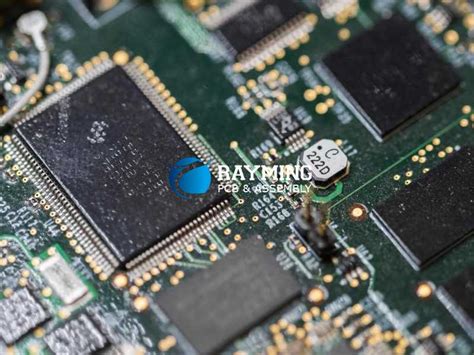
FAQs
What is EMS PCB assembly?
EMS PCB assembly, or Electronic Manufacturing Services Printed Circuit Board Assembly, refers to the process of manufacturing printed circuit boards (PCBs) in a way that meets specific requirements of electronics production. This approach emphasizes efficiency, quality, and cost-effectiveness.
Why is EMS PCB assembly important for electronics production?
The significance of EMS PCB assembly lies in its ability to streamline the manufacturing process. By utilizing specialized techniques and technologies, companies can increase the precision and reliability of their products while reducing production times and costs.
What are the key processes involved in PCB assembly?
Key processes in pcb assembly include design verification, component sourcing, soldering techniques, quality control checks, and final assembly testing. Each stage is crucial for ensuring that the final product meets the necessary industry standards.
How does EMS enhance efficiency in pcb assembly?
By employing advanced technologies such as automation and real-time monitoring systems, EMS significantly enhances operational efficiency. These methodologies ensure reduced downtime and more consistent production outcomes.
What are some benefits of using EMS PCB assembly?
Benefits of using EMS PCB assembly encompass reduced manufacturing costs, improved product quality, quicker time-to-market for new products, and enhanced scalability for growing businesses.
Can I use EMS PCB assembly for custom projects?
Yes! PCB Assembly, especially through an EMS provider, allows for customized solutions tailored to specific project needs. This flexibility helps accommodate unique design requirements while ensuring high-performance metrics are met.

